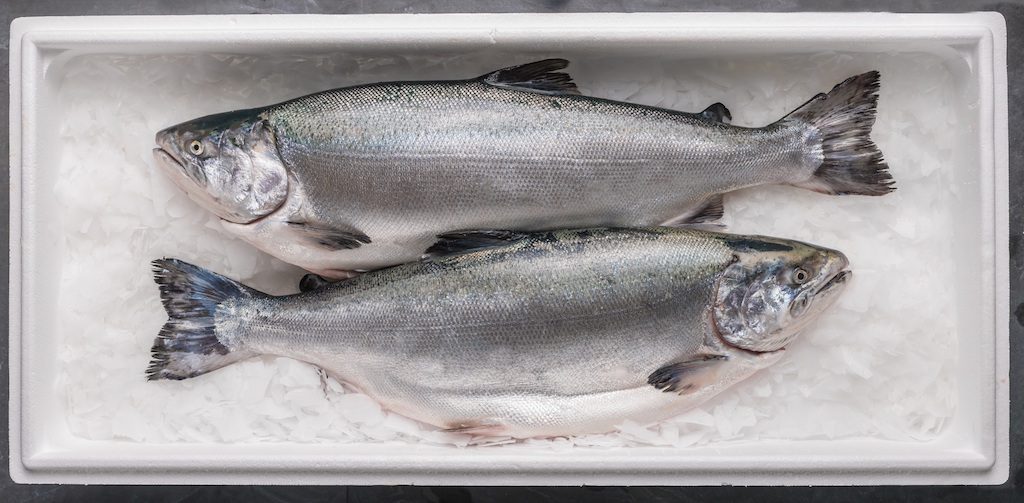
Coho farmer: algae feed behind ‘unprecedented’ sustainability
June 29, 2017
By Nagaraj G. Chatakondi Kenneth B. Davis and Brian C. Peterson
 Ventisqueros of Chile claims to be the industry's first “net fish producers”
Ventisqueros of Chile claims to be the industry's first “net fish producers”
A salmon farmer says it has begun feeding its Pacific salmon (Oncorhynchus kisutch or coho) with AlgaPrime DHA, a whole algae feed ingredient, and has achieved “unprecedented sustainability” as a result.
The farmer, Ventisqueros of Chile, used the Forage Fish Dependency Ratio (FFDR) metric to define sustainability. FFDR describes how many kilograms of wild fish are needed to produce one kilo of farmed fish. The current industry average FFDR is about 1.3 kg, but Ventisqueros’ Silverside Premium Pacific Salmon fed with AlgaPrime DHA results to an industry-low FFDR of 0.5 kg, the company says.
AlgaPrime DHA, made by TerraVia and Bunge in Brazil, is deemed more sustainable because it reduces the aquaculture industry’s dependence on fish oils for feed. Terra Via Global Sustainability Director Jill Kaufmann Johnson last year described the manufacturing process to Aquaculture North America (ANA): “What we do is that sugar [sugarcane feedstock] is crushed at the mill and it is fed to the algae in very large fermentation tanks – like eight stories high.
“The algae grow plump with oil, as algae is the original oil producer, that’s what it naturally does. We remove them from the tank and then they are dried – it’s like a powder. The oil is still encapsulated in the algae. We are making the DHA product in a matter of days.” The innovation represents a step change to current industry solutions and offers consistent supply and quality to customers.
CEO of Ventisqueros, José Luis Vial, said by achieving an FFDR of 0.5 kg, the company has become the first “net fish producers” in the salmon farming industry.
In January, IFFO — the international non-profit organization that represents and promotes the fishmeal, fish oil and wider marine ingredients industry worldwide — cautioned that the use of FFDR as a measure of sustainability should not be not be examined in isolation. Rather, it said FFDR should be regarded as part of an overall package of information relating to aquaculture sustainability.
Advertisement
- Innovations, new approaches empower US catfish farmers
- Marine Aquaculture Development Act gets Senate approval





